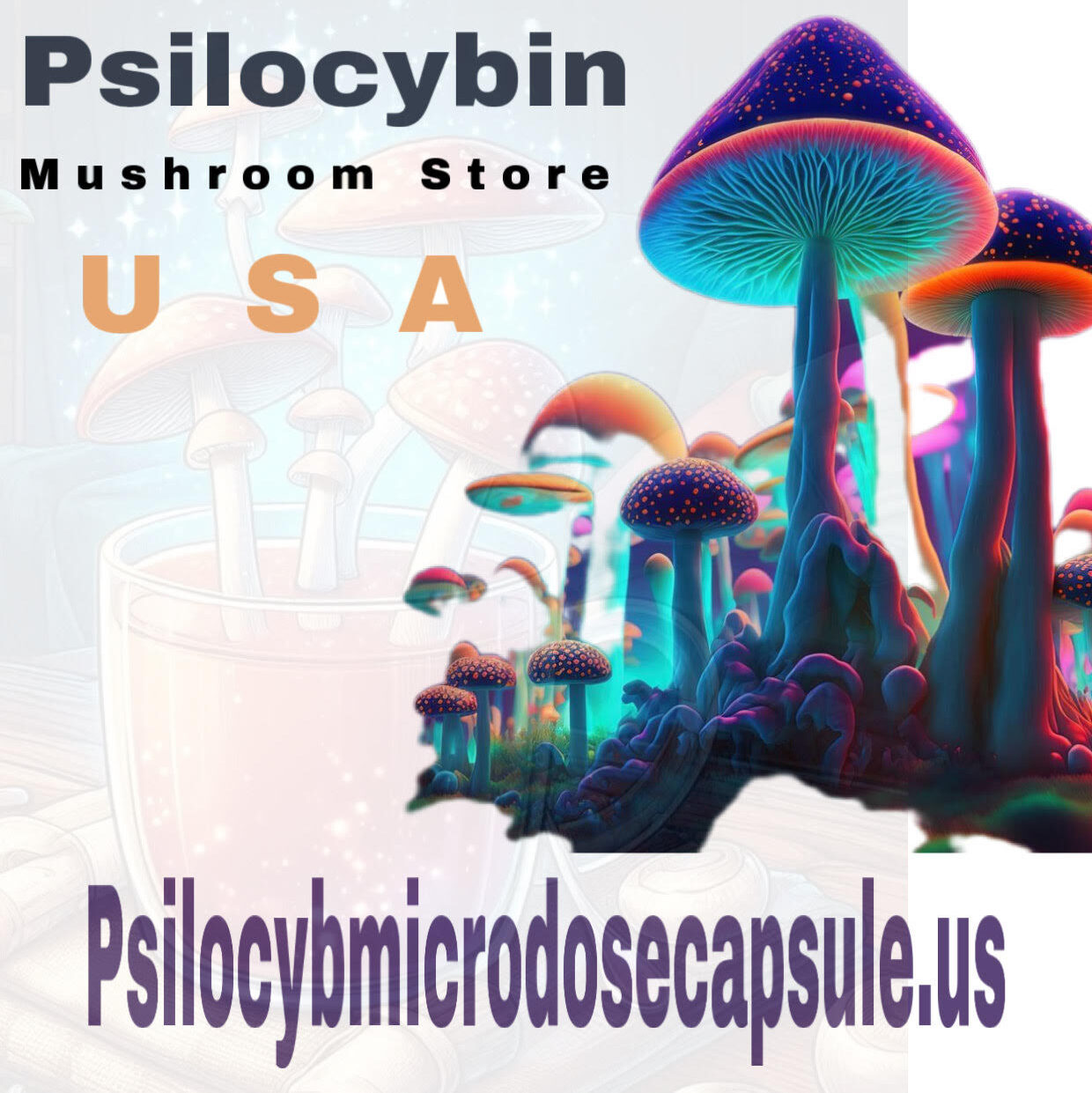Introduction – What is a Psychedelic

The first step in understanding the differences between LSD and psilocybin, the psychoactive compound found in magic mushrooms, is to recognize their commonality as members of the psychedelic drug family. Psychedelics are a distinct class of hallucinogenic substances that induce altered states of consciousness, commonly referred to as “trips.” This is achieved through a process known as serotonin receptor agonism, where these compounds mimic the effects of serotonin produced naturally in the body.
Serotonin receptors are categorized into 7 types, ranging from 5-HT1 to 5-HT7, each with various subtypes denoted by letters. Psychedelics like psilocybin and LSD specifically target the 5-HT2A receptors. While the molecular understanding of this interaction is clear, the precise mechanisms through which psychedelics influence cognition, mood, behavior, and personality remain a frontier in neuroscience that is still being explored.
A consistent finding across all psychedelic drugs is their ability to decrease activity in the default mode network of the brain. This network is active when the mind is not focused on external stimuli, such as during daydreaming, cognitive planning, self-reflection, and memory recall. The reduction in default mode network activity is believed to be a key aspect of how psychedelics exert their effects, resembling changes seen during meditation, mystical experiences, and near-death encounters. This phenomenon represents an intriguing area of study that sheds light on the profound impact of psychedelics on human consciousness.
Research on psychedelics and the potential of psychedelic therapy flourished during the 1950s, but faced a significant setback with the implementation of The Single Convention on Narcotic Drugs in 1961. This international treaty, signed by all United Nations members, aimed to restrict the production and distribution of drugs classified as “narcotics.” While some exemptions were granted for medicinal and clinical purposes, psychedelics were deemed to have no legitimate medical use, leading to a ban on further human research involving these substances.
Despite this restriction, interest in psychedelics persisted, with many individuals reporting positive outcomes from their recreational use. Pioneering researchers like Terence McKenna and Alexander Shulgin continued to explore psychedelics, documenting their experiences and contributing to a growing understanding of the therapeutic potential of substances like psilocybin.
As of 2021, there are over 21,000 scholarly papers referencing psychedelics on Google Scholar, with a significant portion published in recent years. The resurgence of interest in psychedelics within the therapeutic community has led to a surge in research, with new findings emerging regularly. The overwhelming consensus from these studies is that psychedelics offer a promising and underutilized resource for treating a variety of mental health disorders.
What is Psilocybin?

Now that we have discussed the general concept of psychedelics and their mechanisms, let us delve deeper into the specific workings of psilocybin. Psilocybin is the primary psychoactive compound found in psilocybin mushrooms, which have been used for centuries across various cultures. There are over 200 different strains of psilocybin mushrooms found worldwide.
Psilocybin is classified as a “prodrug,” meaning it is not psychoactive in its original form but is converted into a pharmacologically active substance within the body. When ingested, psilocybin is metabolized into psilocin, which is responsible for the psychedelic effects experienced by users. Psilocin primarily binds to 5-HT2A receptors, with lower affinity to other serotonin receptors such as 5-HT1A, 5HT1D, and 5-HT2C.
The psychedelic experience associated with psilocybin is believed to be primarily due to its interaction with 5-HT2A receptors. However, variations in individual experiences, such as levels of anxiety, mood, and nausea, may be influenced by interactions with other serotonin receptors. Understanding the pharmacological profile of psilocybin provides insight into how it behaves at a molecular level and its effects on the human body.
It is important to note that psilocin does not have a significant impact on the body’s dopaminergic system, meaning that the levels of dopamine produced by the body remain relatively unchanged when psilocybin is ingested. More information on dopamine will be provided later.
Furthermore, when discussing “psilocybin,” it is essential to consider that we are primarily referring to psilocybin mushrooms from a practical standpoint. These mushrooms are complex living organisms that are typically consumed in their entirety. Rather than synthesizing psilocybin independently in a laboratory, we consume these “magic mushrooms,” which contain not only psilocybin and psilocin but also a variety of other potentially psychoactive compounds.
Baeocystin, an analog of psilocin found in psilocybin mushrooms, behaves similarly to psilocin, although not identically. Research on baeocystin is limited compared to psilocin and psilocybin, with only about 450 published articles on Google Scholar. Additionally, norpsilocin and norbaeocystin are examples of compounds that were recently identified in 2017, and their effects are still being explored.
Another significant psychoactive compound present in magic mushrooms is phenethylamine. Phenethylamine is a natural monoamine alkaloid that acts as a central nervous system stimulant by regulating monoamine transmission. Some phenethylamine-based drugs, such as 2-CB, MDA, and MDMA, are popular recreationally. While psilocybin interacts differently with the brain chemistry compared to these drugs, the presence of trace amounts of phenethylamine in psilocybin mushrooms should be considered when evaluating their overall pharmacological profile.
What is LSD?

This article aims to provide a brief overview of the history and origins of LSD, also known as Lysergic acid diethylamide, and to focus on its pharmacological profile.
LSD, a psychedelic drug commonly referred to as “acid,” was first synthesized on November 16, 1938, by Swiss chemist Albert Hoffman in Basel, Switzerland. The drug was created using lysergic acid, a chemical derived from ergotamine, an enzyme found in the ergot fungus that grows on rye and other grains. Hoffman’s discovery of LSD was accidental, as he absorbed the substance through his skin and experienced its remarkable effects. Subsequently, on April 16, 1943, Hoffman intentionally ingested 250 µg of LSD and embarked on a bike ride, leading to a profound experience that sparked further exploration.
Throughout its history, LSD has been involved in various events, including the CIA’s acquisition of the global supply for the MKUltra experiments, where it was tested on unsuspecting subjects. Despite being made illegal in the 1960s, LSD became a significant component of the counterculture movement and has more recently been studied for its potential therapeutic benefits.
Pharmacologically, LSD acts as a serotonergic and dopaminergic agonist, mimicking the effects of serotonin and dopamine. This unique combination sets LSD apart from other psychedelics, as few compounds exhibit both serotonergic and dopaminergic properties.
LSD has the ability to impact a variety of serotonin receptors, including 5-HT2A, 5-HT2B, and 5-HT2C. What sets LSD apart from other psychedelics is the way it interacts with these receptors. When the LSD molecule binds to serotonin receptors, it causes them to fold in on themselves, similar to a lid closing over a wastebin. This unique mechanism allows the LSD molecule to remain in place until it eventually detaches, resulting in a prolonged and intense psychedelic experience compared to other drugs in its class.
In addition to its effects on serotonin receptors, LSD also affects the dopamine system and D2 receptors in the brain. Dopamine plays a crucial role in regulating pleasure, goal-setting, motivation, and focus. Drugs like cocaine, MDMA, and methamphetamine work by inhibiting dopamine reuptake, leading to increased dopamine levels in the brain’s synaptic pathways.
It is important to note the difference between agonism and reuptake inhibition. While agonists mimic natural neurotransmitters, reuptake inhibitors disrupt the body’s natural regulation of neurotransmitters. Dopamine agonists, although not commonly used recreationally, are utilized in the treatment of conditions such as Parkinson’s disease, restless leg syndrome, and depression.
The unique psychoactive effects of LSD are believed to stem from its agonism of both dopamine and serotonin receptors. This dual action sets LSD apart from other drugs and contributes to its distinct psychedelic experience.
So What’s the Difference?
There are numerous perspectives to consider when examining the differences between magic mushrooms and LSD, as psychedelics are still a field of study in its infancy. However, the following points highlight the key distinctions:
1. Magic Mushrooms are grown organically, while LSD is synthesized in a lab.
While LSD was initially derived from rye fungus, it is now synthesized in a laboratory setting. This results in LSD being a concentrated molecule, whereas consuming magic mushrooms involves ingesting an entire fungus, with only a small percentage of psilocybin and psilocin. It is important to ensure a reliable source when purchasing magic mushrooms in the United States.
2. LSD can affect both serotonin and dopamine receptors, while psilocin only affects serotonin receptors.
The distinct monoamines of LSD and psilocin lead to different effects on serotonin and dopamine receptors. The dopamine receptor agonism in LSD contributes to its energetic high compared to psilocybin.
3. Both substances interact with 5-HT2A receptors with high synergy, but their effects on other serotonin receptors differ.
While 5-HT2A receptor agonism is commonly linked to psychedelic effects, the activation of other serotonin receptors by these molecules may explain the varying effects.
4. LSD has a longer duration of effects.
The unique binding of the LSD molecule to serotonin receptors allows it to last longer compared to psilocin. While psilocin is typically metabolized within 4-6 hours, LSD’s bond with serotonin receptors prolongs its effects.
In conclusion, understanding the differences between magic mushrooms and LSD can provide valuable insights into the effects and mechanisms of these psychedelics.
